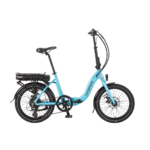I've been absorbing the detail on forums about battery pack capacity and discharge rates.
I now know what the "C" rating is, (the multiplier of the ah capacity to give the safe sustained discharge rate).
I don't know what that figure is for my packs though, it wasn't in the original spec and it's not marked on them.
I have two identical Lithium Ion 36v 10ah packs that lock into my rack (one at a time), or fit in my other bike's pannier bags.
They're in an aluminium case, with rear light, lock, fuse, main switch and battery level leds.
I've been using them so far with 15 amp max controllers. Though they were briefly used with a 36v 750w direct hub motor and controller, and seemed to work ok, though not "thrashed" on it).
Just thinking ahead, and wanting them to last as long as possible, would they support say, 25 amp controllers and motors, or would that significantly shorten their life ?

I now know what the "C" rating is, (the multiplier of the ah capacity to give the safe sustained discharge rate).
I don't know what that figure is for my packs though, it wasn't in the original spec and it's not marked on them.
I have two identical Lithium Ion 36v 10ah packs that lock into my rack (one at a time), or fit in my other bike's pannier bags.
They're in an aluminium case, with rear light, lock, fuse, main switch and battery level leds.
I've been using them so far with 15 amp max controllers. Though they were briefly used with a 36v 750w direct hub motor and controller, and seemed to work ok, though not "thrashed" on it).
Just thinking ahead, and wanting them to last as long as possible, would they support say, 25 amp controllers and motors, or would that significantly shorten their life ?







